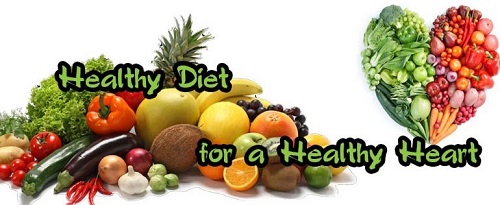


Heart health is a subject talked about from preschool on up. Remember Jump Rope for Heart? Heart health is an important subject. You need to keep your heart healthy because, well, without it you have no life. Pun intended!
The awesome thing about having a healthy cardiac diet is that it has so many other benefits. A cardiac diet can also help manage weight, cholesterol, and other issues like hypoglycemia and type 2 diabetes. There’s nothing like “hitting two birds with one stone” or three birds, or four… Ok, it has nothing to do with harming birds, but I think you know where I was going with that.
A diet is simply the habitual nourishment regularly consumed. Diet is what you eat. Diet is a choice, not a fad. Diet is part of your lifestyle. If you want to eat healthy, for whatever reason, you incorporate foods into, or out of, your lifestyle. The easiest way to do this is to do it at a comfortable pace. I know we live in a “want it NOW” day and age, but the old saying“The best things in life take time” is so true!
A main reason for giving up on a healthy diet change is the fear of difficulty. Many people have the facts, but they don’t have the more personal information to help. Usually this is time or cost. “I don’t have the time to exercise.” “I don’t have the money for healthy food.”
Well, I plan to change that mindset!
According to the American Heart Association diet and lifestyle recommendations, you first need to know how many calories you need in a day to maintain your current weight. This is an easy calculation.
Step One - Find your Basal Metabolic Rate (BMR). This is the formula (note: this formula is for adults only):
For me (a 37yr old woman still on my weight loss journey; have lost 80 pounds already!) the formula would read: 655 +(177x4.3=761.1)+ (65x4.7=305)- (37x4.7=173.9)= 1547.2
So, my BMR is 1547.2.
Step Two - Multiply your BMR by one of the following numbers, depending on how active you are throughout an average day:
This end amount is how many calories you need every day to maintain your weight. I need around 2011 calories (1547.2x1.3=2011.36).
If you want to lose or gain weight, change your daily amount accordingly. One pound equals 3500 calories. If you wanted to lose one pound per week, you would need to consume around 500 calories less per day. If you wanted to gain one pound per week, you would need to consume around 500 more calories per day.
 In order to eat healthier, there are certain foods that should be only eaten sparingly, or even eliminated altogether for a good cardiac diet. The American Heart Association diet and lifestyle recommendations of foods to limit include red meat, sugary foods and sweetened beverages. Eliminating these foods for your cardiac diet will hardly limit delicious foods from your menu!
In order to eat healthier, there are certain foods that should be only eaten sparingly, or even eliminated altogether for a good cardiac diet. The American Heart Association diet and lifestyle recommendations of foods to limit include red meat, sugary foods and sweetened beverages. Eliminating these foods for your cardiac diet will hardly limit delicious foods from your menu!
Instead, fill your plate with fruits, vegetables, whole grains, low-fat dairy, poultry, fish and nuts. There are so many mouth-watering dishes you can create with heart friendly ingredients! Experiment with herbs and spices to liven up dishes!
Some of the most well-known top heart healthy foods to include in your cardiac diet are:
|
|
|
|
These foods provide heart healthy nutrients, including, but not limited to, omega-3 fatty acids, B-complex vitamins, vitamins A, C, and E, and loads of fiber!
Serving suggestions for a healthy cardiac diet according to the American Heart Association diet and lifestyle recommendations are as follows:
To make the cardiac diet more cost effective, buy produce when in season. I spend less than $3 on my greens for five days at my local grocery store. That’s less than a fattening burger at your local fast food restaurant! Shop around and find the best deals. Not only can you make a cardiac diet more inexpensive now, you can also save money in the long run by saving yourself medical costs from life-altering and life-threatening medical situations!
To help you with making a healthy cardiac diet plan, here are 2 samples you may find helpful: Menus for heart-healthy eating and 7-Day Heart-Healthy Meal Plan.
Cardio exercise raises your heart rate. Cardio exercise also helps the heart supply oxygen-rich blood to vital organs and muscles by making your heart beat faster and stronger.
The American Heart Association Diet recommends getting at least 30 minutes of cardio activity most days of the week, if not every day of the week.
Think you don’t have the time? You can easily break 30 minutes of cardio into three ten-minute sessions. I have found that I can get much of my cardio in by just doing the housework I have every day. I give myself ten minutes for each room. I clean as quickly as I can. Most of the time, I get things done that I would not normally have thought of. Again….killing two birds with one stone!
A personal trainer, I once had, told me that strength training should be based on you moving around obstacles and moving obstacles around you. Every day, you are faced with “moving” something. You don’t have to lift weights. If you are going to the laundromat and are bringing the detergent to your vehicle, do lifts with the detergent all the way to the car. When you come home, do the same with the other arm! There are so many ways to incorporate your everyday life into a workout. Working muscles help keep them ready for the everyday activities you already have to do.